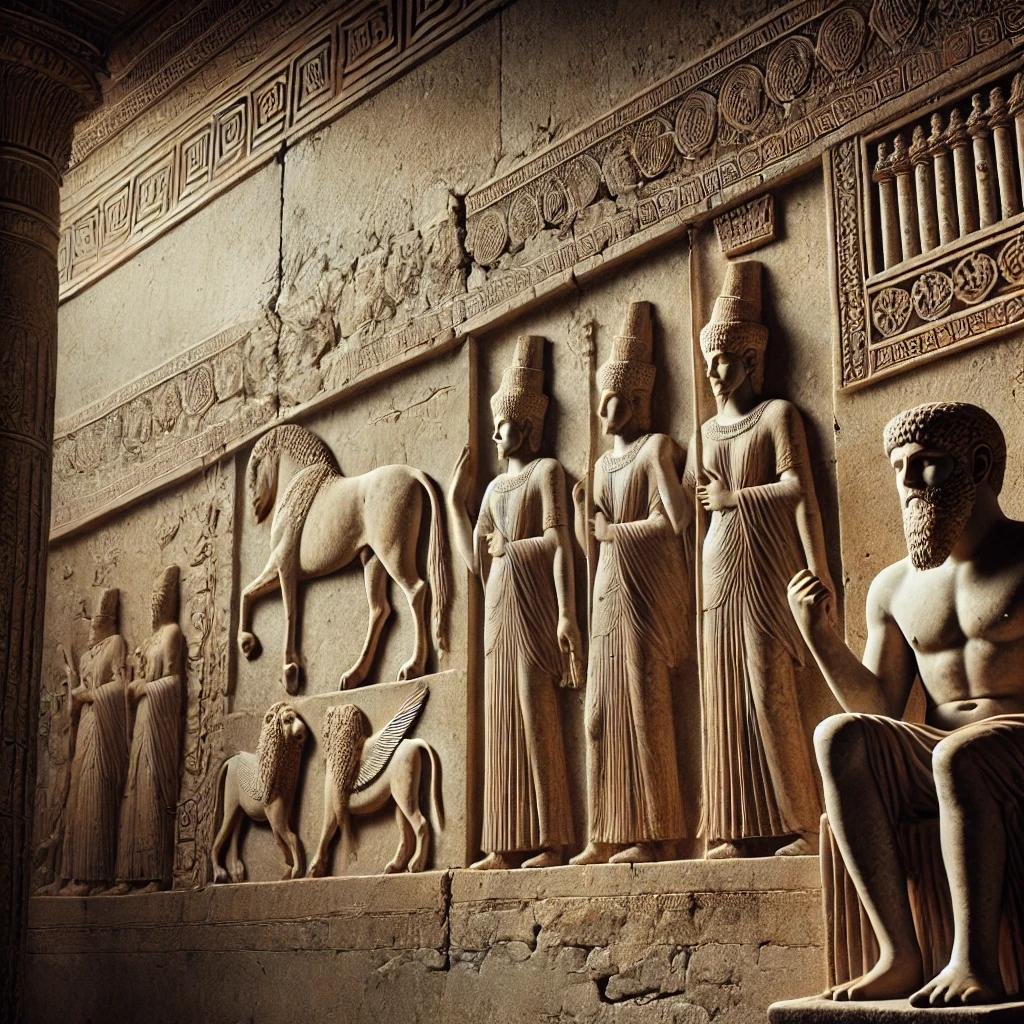Definition of Ancient Artz and Its Significance as a Cultural Artifact
Ancient Artz means the creative works of early human societies, paintings, sculptures, pottery etc. These weren’t just decorative, they were central to religious rituals, social practices and power. Ancient Artz has huge cultural value because it shows us what those societies valued most – be it gods, leaders or community stories. Every line drawn or statue sculpted says, “This is what mattered, this is who we were.”
Origins of Ancient Artz
Prehistoric
The story of Ancient Artz starts in dimly lit caves where early humans used their surroundings as canvas and inspiration. Imagine someone hunched over in the Lascaux caves in France, painting horses and bison. These artworks thousands of years old were more than just decoration, they might have been a way to communicate, tell stories or conduct spiritual rituals. Standing in those ancient spaces today you can almost hear the hunters sharing tales by firelight. These paintings remind us that before skyscrapers and smartphones, art was a big part of human life.
Evolution Through Civilizations
As societies got more complex so did their art. Mesopotamia, often called the cradle of civilization, produced intricate carvings and the first known form of writing, cuneiform. Egyptian art took this to monumental scales, from the grandeur of pyramids to the detailed, lifelike tomb paintings to guide souls to the afterlife. Each civilization added to the evolution of Ancient Artz, layering complexity on top of simplicity, leaving us in awe.
Major Civilizations and Their Art
Mesopotamian
Mesopotamia’s art is amazing. This region between the Tigris and Euphrates rivers gave rise to cities and empires that laid the foundation for complex societies. Sculptures like the lamassu – mythical creatures guarding palace gates – showed off their skills and deep belief in protection and power. Pottery was another hallmark, utility and beauty. Cuneiform was more than a script, it became an art form when inscribed on clay tablets, written language became visual art.
Egyptian
Mention ancient art and pyramids and Pharaohs pop into your head. Egyptian art wasn’t just about grandeur but symbolism and purpose. Wall paintings in tombs showed the journey of the soul, with gods, sacred animals and offerings. Statues stood tall, with eyes that seemed to gaze into eternity. These were not just for show, they were acts of devotion to ensure the dead could get through the afterlife safely. Every symbol from the ankh to the Eye of Horus meant something.
Greek and Roman
Greek art, with its quest for beauty, was the benchmark. Sculptors like Phidias rendered the human form so accurately even the veins and muscles looked lifelike. Roman art, inspired by the Greeks, added its own twist, realism and grandeur in frescos and public buildings. The Parthenon’s friezes, for example, not only showcased artistic mastery but told stories of gods and warriors, intertwining myth with civic pride.
Materials and Techniques in Ancient Artz
Common Materials Used
Ancient artists didn’t have much to work with but what they did with what they had was pure genius. Stone, clay and metal were the basics. The Greeks carved marble statues that could almost live, while the Egyptians used limestone to create figures that would last millennia. Clay tablets held history as scribes wrote, while textiles dyed with natural pigments spoke of color and craftsmanship.
Techniques Such as Carving, Painting and Pottery-Making
Carving was an art in itself, a labor of love that required patience and skill. The detail required to carve a pharaoh’s headdress or the folds in a Greek robe was immense. Painting was another beloved craft, seen in the reds and blacks of Greek pottery or the blues of Egyptian frescoes. Pottery-making with its spinning wheels and steady hands was a canvas for everyday life and legend.
New Techniques in Art
As time went on civilizations developed new ways. The Mesopotamians invented glazes for pottery, the Greeks lost-wax casting for bronze statues. Each innovation told the same story: humans’ endless search for better ways to create, express and remember.
Themes and Symbolism in Ancient Artz
Religious and Mythological Themes
Ancient Artz is full of gods, rituals and the supernatural. In Mesopotamia, deities were huge in stone carvings, overseeing war and harvests. The Egyptians’ art was full of gods and sacred stories, each piece to secure divine favor or protection in the afterlife. Across these cultures art became a bridge between the earthly and the divine.
Everyday Life
It wasn’t all gods and kings. Many artworks showed everyday life, from farmers plowing fields to banquets and markets. Such scenes give us a glimpse into social hierarchies and community events. Greek vases showed warriors at war but others showed athletes, the love of competition and the pursuit of glory.
The Influence of Ancient Artz on Modern Culture
Inspiration for Contemporary Artists
Modern artists owe a lot to Ancient Artz. Its themes, techniques and styles continue to inspire sculpture to fashion. Egyptian symmetry is in contemporary jewelry, Grecian drapery in modern clothing. Even street artists draw on ancient symbols to bring new life to walls and alleys.
Conservation
Saving ancient art is a time sensitive task. Museums and cultural institutions are the guardians, using technology and careful conservation to keep these treasures safe. Digital archives now allow the public to see ancient masterpieces without borders, keeping Ancient Artz alive and accessible.
Conclusion
Ancient Artz isn’t just of the past; it’s a living legacy. It speaks of human creativity, aspiration and the need to leave a mark that will last. By looking through the window of Ancient Artz we don’t just see civilizations we see ourselves.






